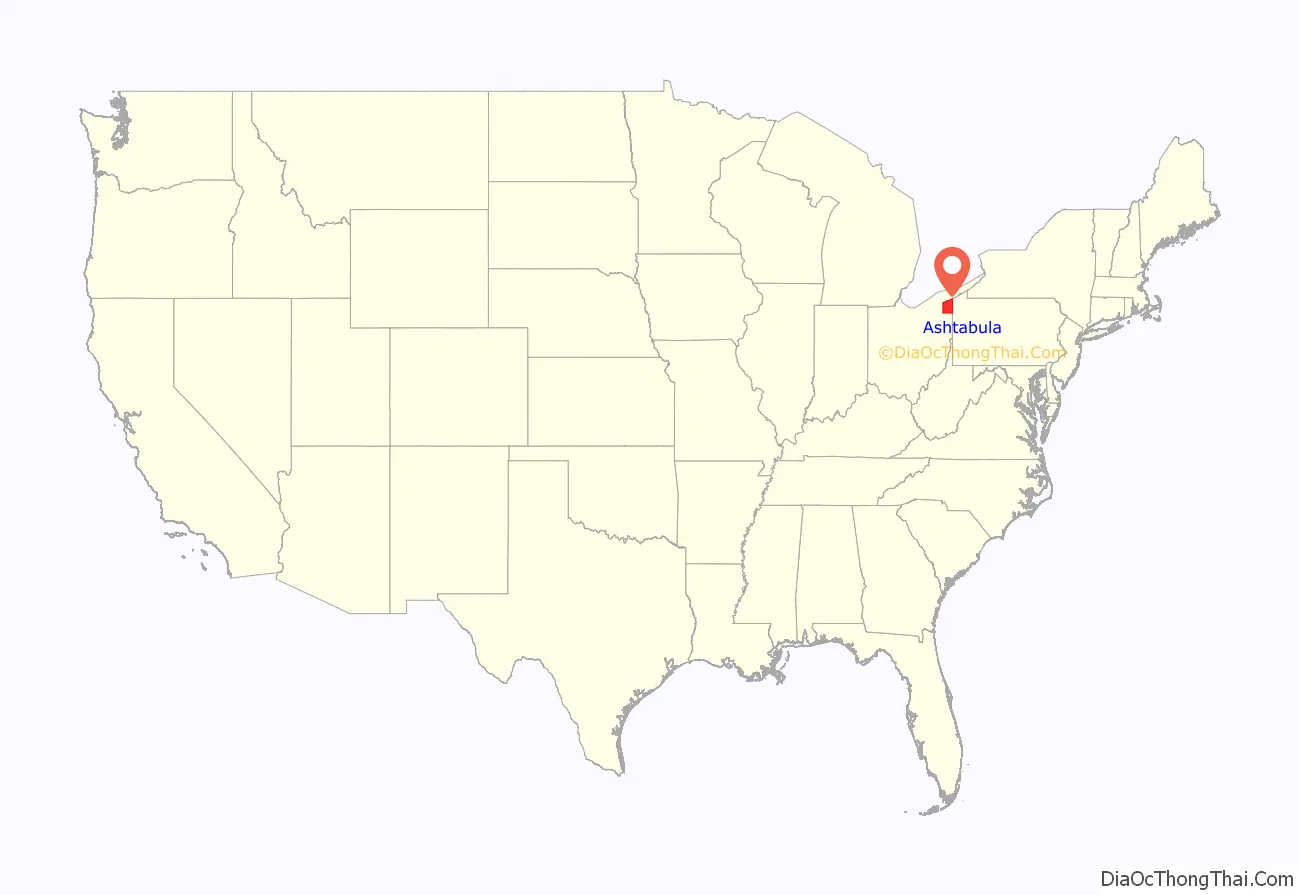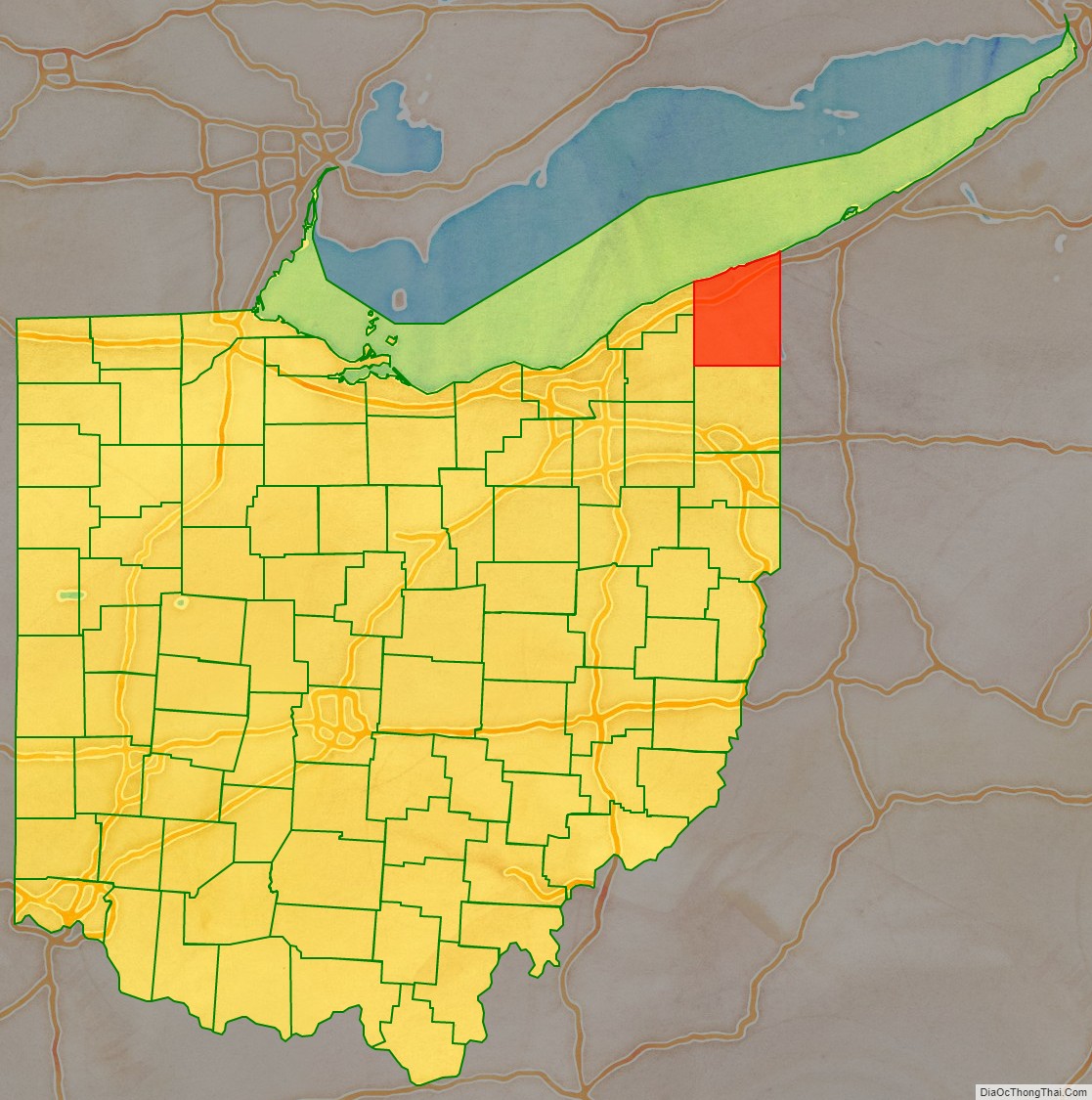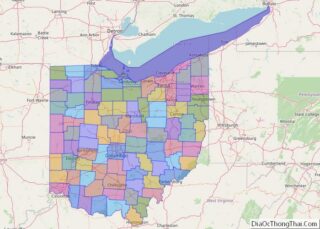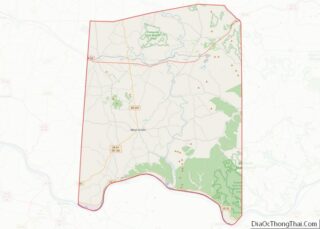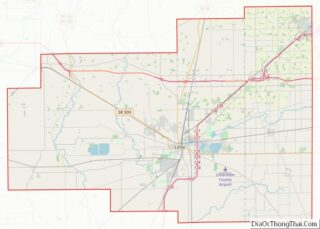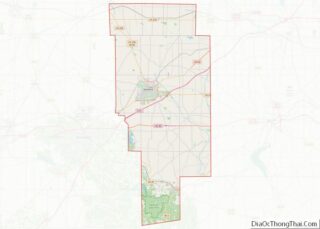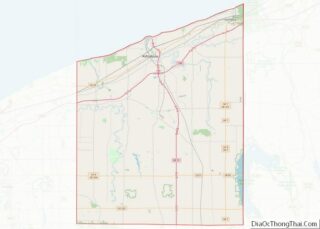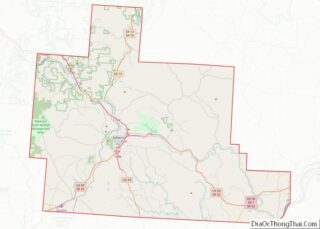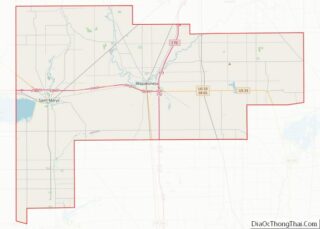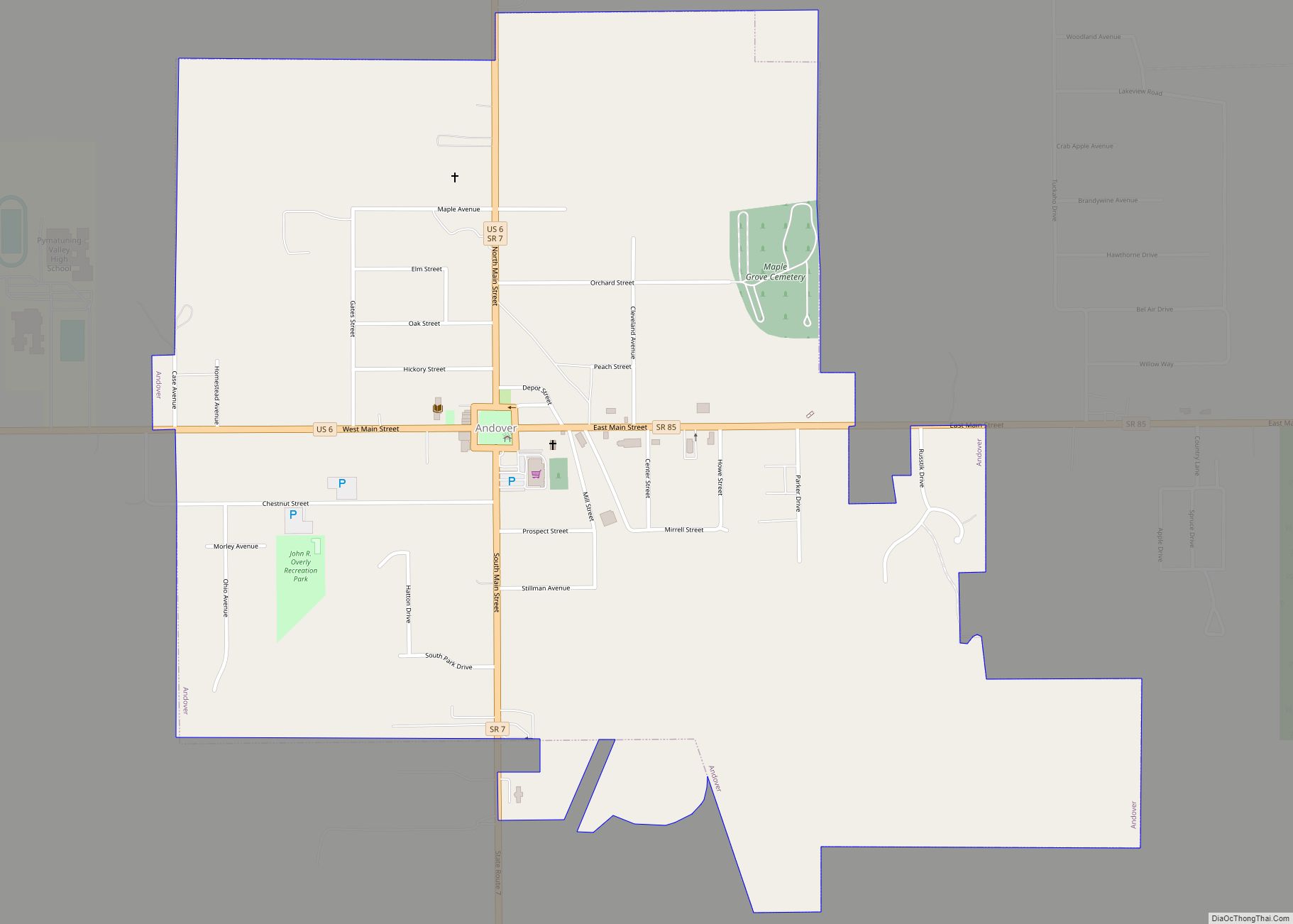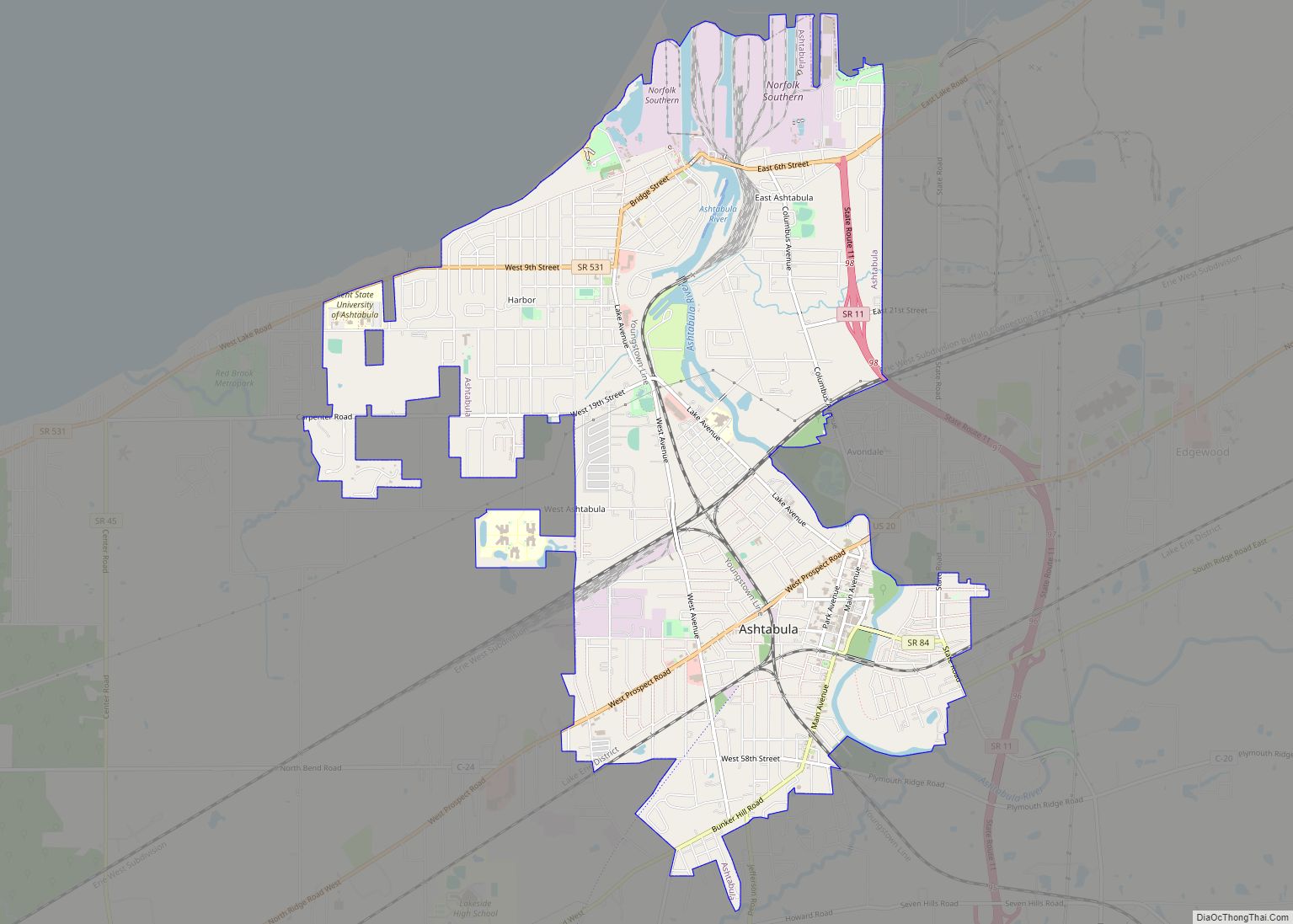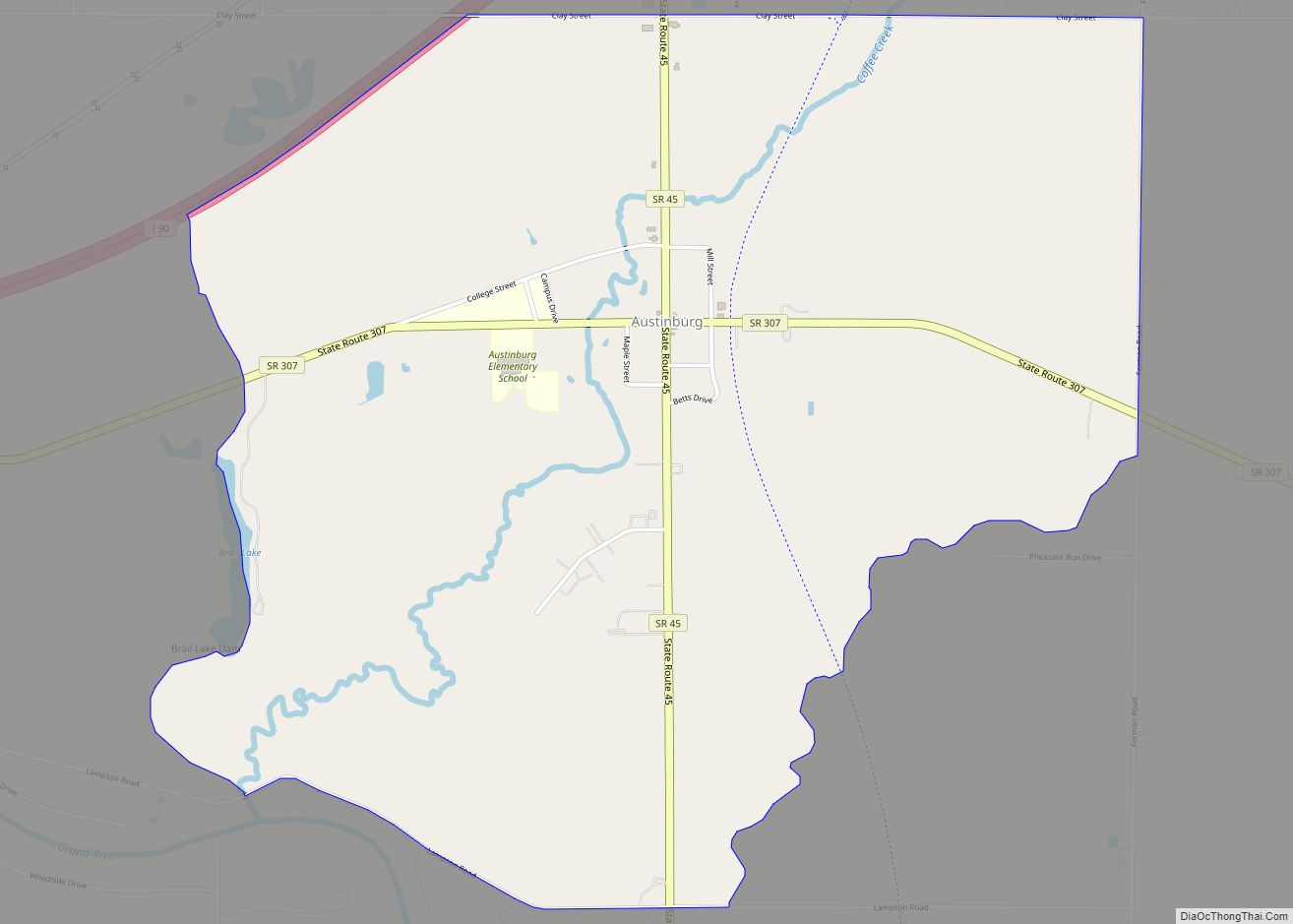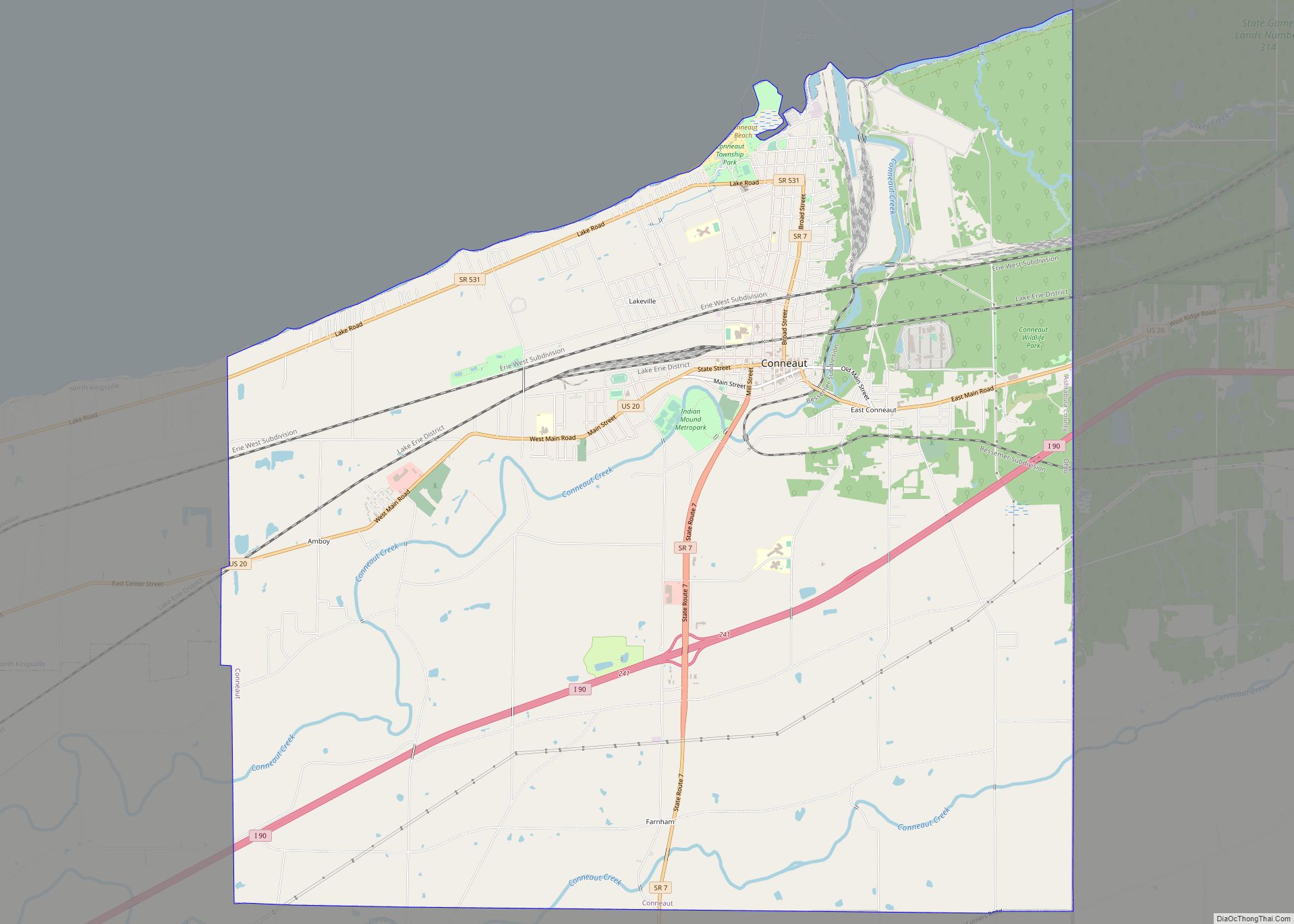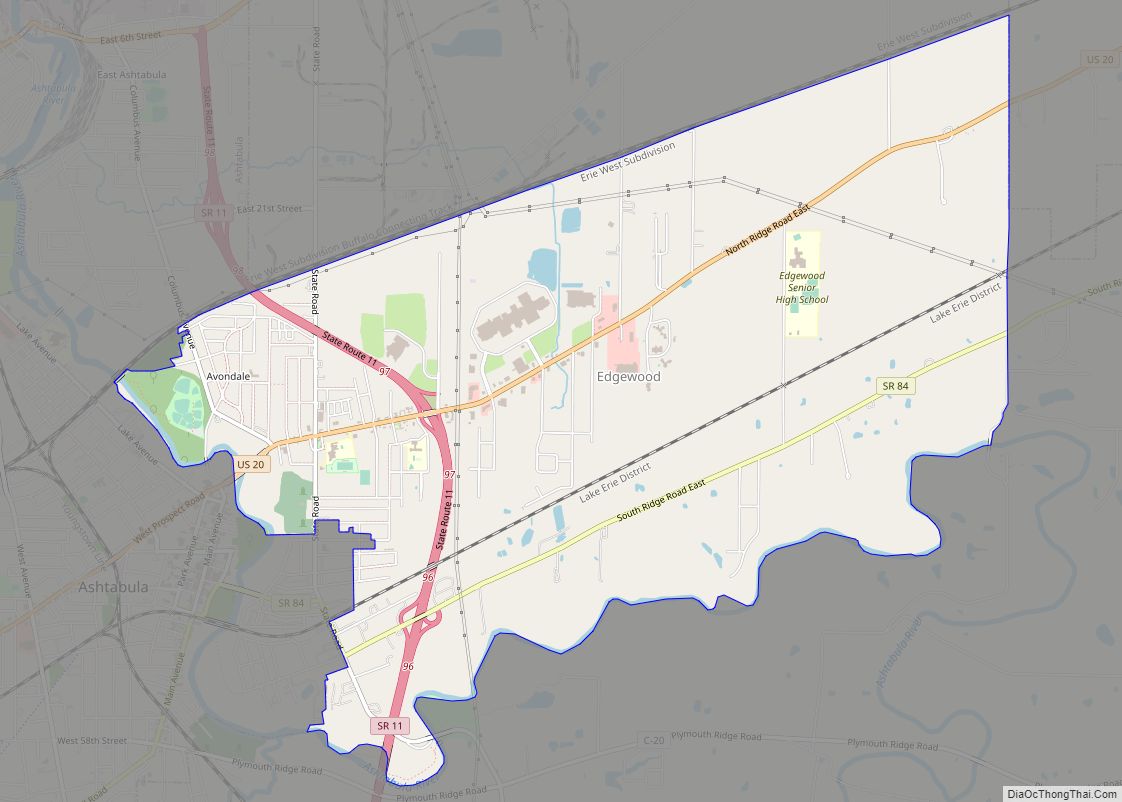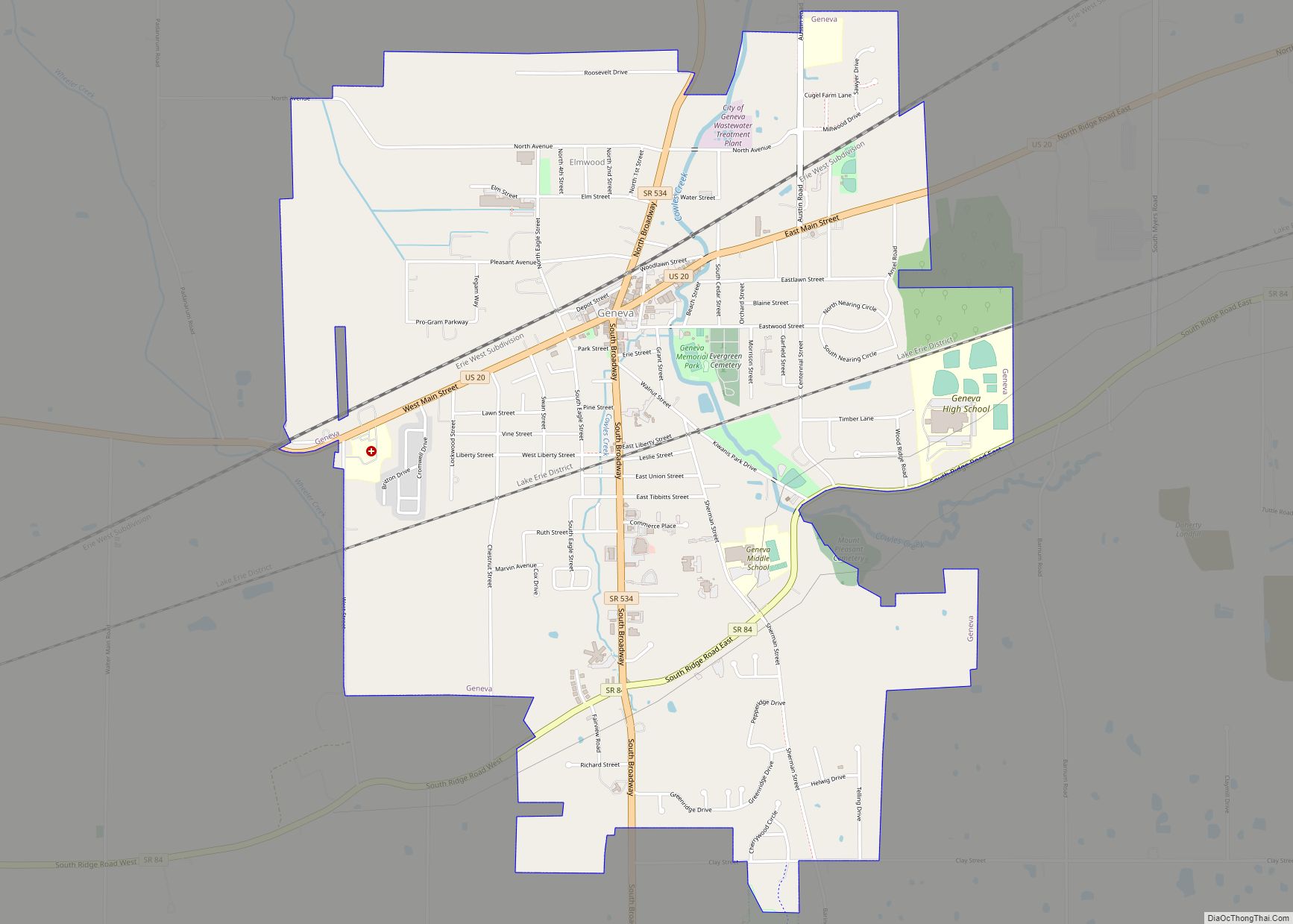Ashtabula County (/ˌæʃtəˈbjuːlə/ ASH-tə-BYU-lə) is the northeasternmost county in the U.S. state of Ohio. As of the 2020 census, the population was 97,574. The county seat is Jefferson, while its largest city is Ashtabula. The county was created in 1808 and later organized in 1811. The name Ashtabula derives from the Lenape language phrase ashte-pihële, which translates to ‘always enough (fish) to go around, to be given away’ and is a contraction of apchi (‘always’) + tepi (‘enough’) + hële (verb of motion). Ashtabula County comprises the Ashtabula, OH Micropolitan Statistical Area, which is also included in the Cleveland–Akron–Canton, OH Combined Statistical Area.
The county is best known for having nineteen covered bridges within the county limits, including both the longest and the shortest covered bridges in the United States. Grapes are a popular crop and there are several award-winning wineries in the region due to the favorable microclimate from the nearby lake. During the winter, Ashtabula County (along with neighboring Geauga and Lake Counties, as well as Crawford and Erie Counties in neighboring Pennsylvania) receives frequent lake-effect snow and is part of the Southeastern Lake Erie Snowbelt.
| Name: | Ashtabula County |
|---|---|
| FIPS code: | 39-007 |
| State: | Ohio |
| Founded: | May 1, 1811 |
| Named for: | Lenape ashtepihële ‘always enough fish to go around’ |
| Seat: | Jefferson |
| Largest city: | Ashtabula |
| Total Area: | 1,368 sq mi (3,540 km²) |
| Land Area: | 702 sq mi (1,820 km²) |
| Total Population: | 97,574 |
| Population Density: | 71/sq mi (27/km²) |
| Time zone: | UTC−5 (Eastern) |
| Summer Time Zone (DST): | UTC−4 (EDT) |
| Website: | www.co.ashtabula.oh.us |
Ashtabula County location map. Where is Ashtabula County?
History
At the time of contact, Ashtabula County appears to have been divided between the Erie people in the east and the Whittlesey culture in the west. The Erie were an Iroquoian people, who were organized like the Iroquois, believed in a similar religion and lived in longhouses in palisaded villages and may have had a burial ground at what is now Erie, PA, whereas the uncontacted Whittlesey are mostly believed to have been Algonquians, who also lived in longhouses at the time of contact (after having gone through prior periods of living in wigwams and Fort Ancient style houses) in villages surrounded by earthen berm walls and had smaller, local burial grounds near each settlement. The French were the first to explore the Great Lakes by ship and, having never met the inhabitants, saw the continuation of longhouses and mistakenly assumed the entire region had belonged to the Erie. Both tribes were likely eradicated by the Iroquois Confederacy during the Beaver Wars (approx. 1630-1701), which later bled into the first of the myriad conflicts collectively called the French-Indian Wars, probably specifically some time during the 1650s. The Jesuit Relations claim rumors of infighting between the Erie and an unknown nation to the west of them who were similar to other Algonquian peoples the French had already encountered in the years prior to both tribes’ eradication. Three known village sites have been documented by archaeologists from this period in Windsor (located inside what is now a private children’s Summer Camp) and two at Conneaut. Following the Beaver Wars, and the first conflict of the French-Indian Wars coming to an end in 1701, an official border between England and France was established at what is now the Ohio-PA border, leading to English forts being erected all along the Pennsylvania side that became crucial in the later conflicts of the French-Indian Wars over the next 50 years.
After Europeans arrived in the Americas, the land that became Ashtabula County was originally part of the French colony of Illinois Country, which was ceded in 1764 to Great Britain, along with the rest of Canada (New France) and incorporated into the Province of Quebec, though generally came to be referred to as Ohio Country. The Iroquois placed a vassal tribe of mostly captured Hurons in the region, who later broke free of their control when the French pushed Iroquois and English influence from the area in the 1690s. This group, known as the Wyandot, later ceded settlement of most of the territory roughly between what is now Cleveland, Akron, East Liverpool and the Ohio-PA border to be a common hunting ground, shared by themselves, the Seneca, Shawnee, Lenape and even the Ottawa, or Mississauga, who lived at the western end of Lake Erie, at the time. The Ottawa were the only residents, who maintained two known hunting camps in Ashtabula County- one at Conneaut, and the other at Andover. After the end of the Northwest Indian War, (a conflict which erupted shortly after the American Revolution between the fledgling United States and all the remaining tribes of the Great Lakes region in territory the US claimed) in the 1790s, the Natives were made to turn over ownership of the area to the US via the Treaty of Greenville, and the remaining Ottawa residents were evicted. The area was traversed several times during the period of the French-Indian Wars by the English, including the group led by Major Robert Rodgers, who ultimately convinced Chief Pontiac to switch sides from the French to the English.
In the late 18th century, the land became part of the Connecticut Western Reserve in the Northwest Territory, then was purchased by the Connecticut Land Company in 1795, culminating in the settlement of the first American residents in the region. It was created from Geauga County and a small portion of northern Trumbull County.
During the pre-Civil War period, the entire Western Reserve area of Ohio was anti-slavery, but Ashtabula County was at the center of the resistance. John Brown’s eldest son, John Jr., lived in the county for years, and his brother Owen took refuge with him when Virginia was seeking to extradite him for his role in the raid on Harpers Ferry. An armed group of 200 made them safer than anywhere in the U.S., they said, or even Canada. Dangerfield Newby met John Brown in Ashtabula County.
Ashtabula County Road Map
Geography
According to the U.S. Census Bureau, the county has a total area of 1,368 square miles (3,540 km), of which 702 square miles (1,820 km) is land and 666 square miles (1,720 km) (49%) is water. It is the largest county in Ohio by area.
Adjacent counties
Across Lake Erie lie Elgin and Norfolk Counties, Ontario, Canada (north).
- Erie County, Pennsylvania (northeast)
- Crawford County, Pennsylvania (east)
- Trumbull County (south)
- Geauga County (southwest)
- Lake County (west)
Major highways
- I-90
- US 6
- US 20
- US 322
- SR 7
- SR 11
- SR 45
- SR 46
- SR 84
- SR 85
- SR 86
- SR 167
- SR 193
- SR 307
- SR 531
- SR 534
